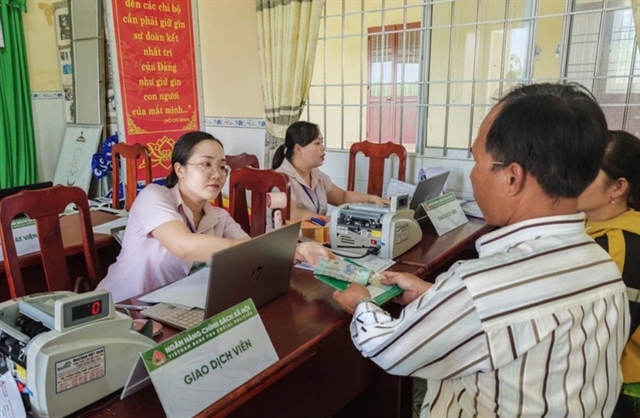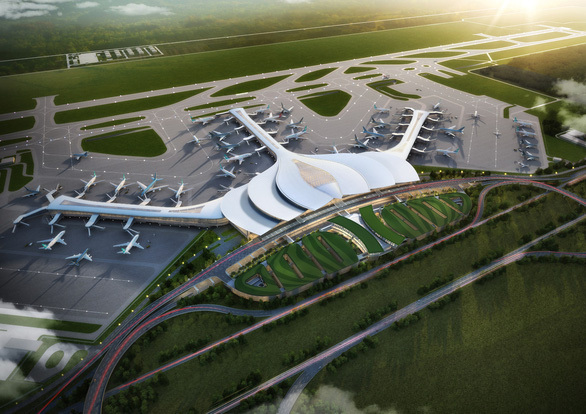 Economy
Economy


|
| The design of Long Thành International Airport in Đồng Nai Province. — Photo courtesy of ACV |
HÀ NỘI — The State-run Airports Corporation of Việt Nam (ACV) has said it wants to borrow US dollars from local banks for the country's largest airport project, Long Thành International Airport in Đồng Nai Province.
ACV’s chairman, Lại Xuân Thanh, sent a report to the Economic Committee of the National Assembly, asking them to support the plan of borrowing and paying in US dollars in order to maximise benefits and efficiency.
Thanh said as the interest rate in the foreign currency was lower than the Vietnamese đồng, it would help the firm to save on costs.
According to ACV’s leader, phase one of the investment project, estimated to cost about US$2.5 billion, was being focused on, but the COVID-19 pandemic had a great impact on economies around the world and in particular the aviation industry.
As all international commercial flights were stopped in Việt Nam, it affected ACV's main source of foreign currency revenue, while the outbreaks in some localities also significantly reduced domestic passenger volume.
Thanh also said the pandemic has made it difficult to negotiate and sign contracts with partner companies as foreign experts had to undergo quarantine.
Moreover, the ACV representative said, the soaring price of raw materials, especially steel prices, was causing difficulties for the project’s implementation.
To deal with all the factors, ACV proposed to the Prime Minister to allow it to accumulate money from production and business activities for investment.
The firm also proposed the PM consider and approve the plan to allow ACV to borrow from domestic state-owned banks in USD and pay in USD to save on interest.
ACV's representative said: “The lending interest rate in USD is always significantly lower than that in VND, while ACV has direct and indirect USD revenue from business activities in international airports such as NộI Bài, Tân Sơn Nhất and Phú Quốc to pay interest on foreign currency loans.”
Thanh said: “At present, domestic state-owned banks that have a surplus of USD need to find reliable lending partners and bring higher interest rates than deposit rates at foreign banks,” adding such a lending option could ensure benefits for the State and improve project efficiency while preserving and developing state capital in ACV as a state-owned enterprise.
Also to ensure the progress of Long Thành Airport project in the context of the pandemic, ACV suggested the National Assembly direct the relevant authorities to soon apply measures to stabilise the price of materials as well as support the plan of borrowing and paying in USD to ensure maximum efficiency.
In April this year, ACV, which is the investor of the expensive and ambitious transport hub project in the southern province of Đồng Nai, committed to start construction of Long Thành International Airport’s passenger terminal early next year.
As Long Thành International Airport is one of the breakthrough projects of the national transport sector in the 2021-25 period, deputy transport minister Lê Anh Tuấn urged all parties to coordinate and facilitate the progress of all components of the project and disburse the allocated State capital.
According to ACV, Long Thành International Airport will be built in three phases over three decades. In the first phase, one runway with a length of 4,000m, taxiways, an apron, and a passenger terminal with other auxiliary works sprawling 373,000sq.m will be built to serve 25 million passengers and 1.2 million tonnes of cargo each year.
The airport, which was expected to cost VNĐ336.63 trillion ($14.5 billion), is designed to have four runways, four passenger terminals, and other auxiliary facilities to ensure a capacity of 100 million passengers and 5 million tonnes of cargo a year by 2040. — VNS



